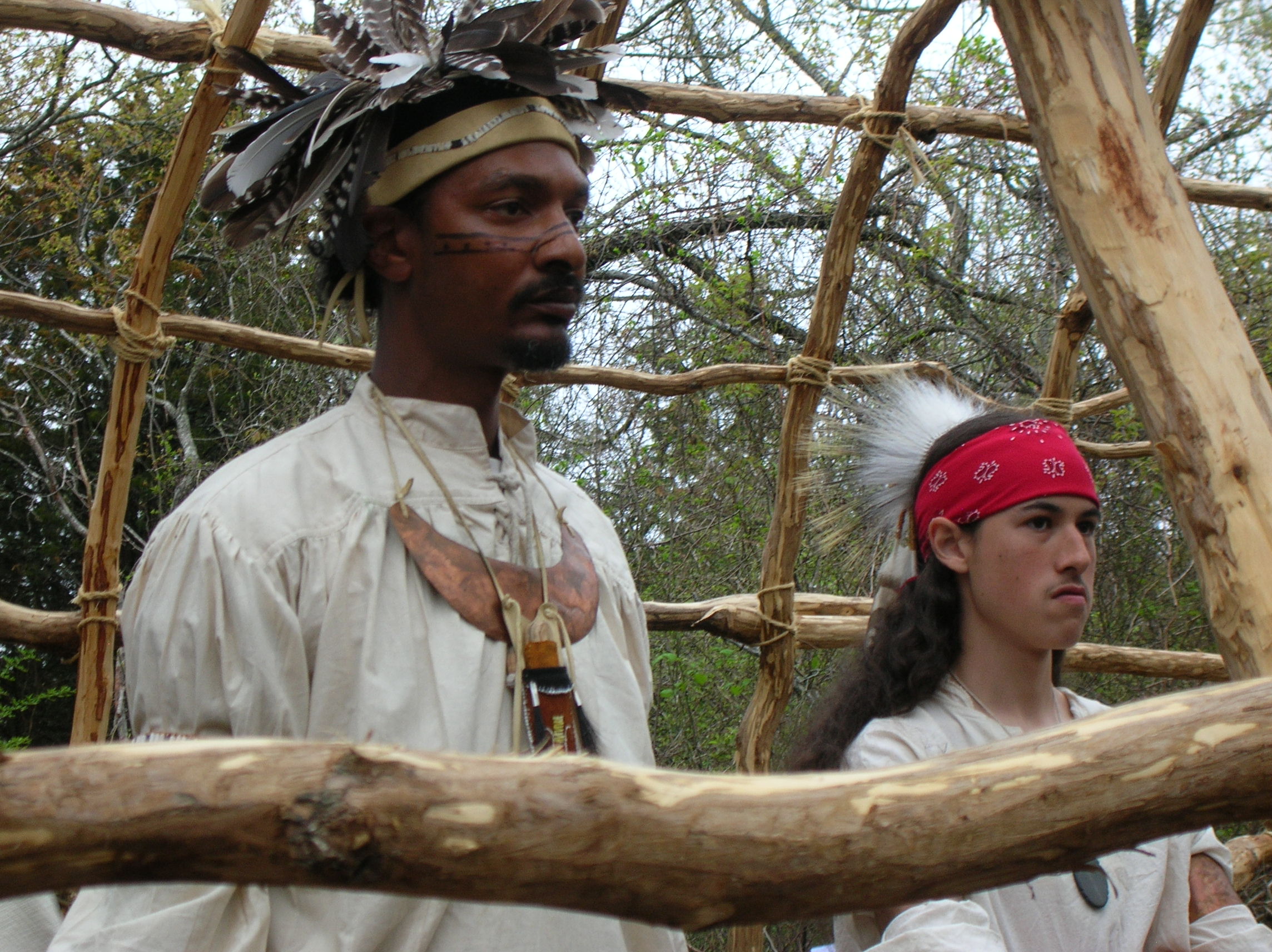Wikun Village Debuts at Shinnecock Reservation

The Shinnecock Nation Cultural Center and Museum held a ribbon cutting ceremony Thursday, May 9, in preparation for the Memorial Day weekend opening of their Wikun Village (pronounced wee-gan) living exhibit. The village is located behind the cultural center, and entered by following a path leading into a grove of trees and another time and place. There is a longhouse, garden, fire pit, fishing nets and other exhibits and items on display. I went to talk to the wonderful staff that put in long hours of study, research and sweat to make this exhibit happen.
Upon arriving at the cultural center parking lot, I saw a teenaged Shinnecock girl wave at me as she hurried from her mother’s car to disappear into the museum’s back entrance. And, like Alice following the White Rabbit, I was led into something quite unexpected and exciting that sparked my curiosity. I walked into a downstairs workroom bustling with staff, artisans and interpreters all bustling about as they prepared for a promotional photo shoot. The outside sunlight shone in on a beautiful young Shinnecock woman in traditional period dress being fussed over by a curator/administrator as they decided what hand-woven sash would go best with the outfit. I said I thought they all looked good, but after being pooh-poohed decided to sit and watch what transpired. Another lovely woman, also in beautiful period attire, stepped in to help. The result of their fussing and ministrations was a look at things to come.
A door opened on the other side of the room and if I was a settler in old Southampton, I might have started looking for a way out, because framed in the doorway was a strapping Shinnecock man, followed by another, both in deerskin breechcloths, knee-high leggings, white trade-cloth shirts, beautiful dyed “roaches,” and one in warrior face paint. And even though I’ve seen native men in traditional dress a thousand times, (including in the mirror) I was still taken back by the physical presence of these artisan/interpreters and the ease with which they wore their outfits (Wikun Village residents are called artisans/interpreters, they made the village and all it entails.). This applies to all the staff; they all seemed to take on the spirit and persona of those old-time Shinnecock (dating from 1640 to 1750), even little Lilly Tarrant, who although she was strapped in a cradle board, seemed quite relaxed and at home.
I followed everyone outside and to a path that leads into a glade of pine and white scrub oak trees not more than 100 feet from Montauk Highway. I thought how the highway was once a trail our ancestors followed and that perhaps there had been wicki-ups (or wigwams) hundreds of years ago right where we stood. Outside I was met by Museum/Cultural Center Director David Bunn Martine, Assistant Director Andrea Godoy, and Administrative Assistant Tohanash Tarrant. They were justifiably beaming with pride and a sense of accomplishment over the upcoming grand opening.
We then continued out to the wigwam (or wicki-up) that’s in front of the museum building. On the way there we passed a worktable where I noticed a hand-made tool and was told by David Martine that it was a digging hoe made from the scapula of a deer. When I say the staff did meticulous research this is a prime example.
There was a fire already burning inside the wigwam (or wicki-up) and photos were taken of the interpreters going about their household duties. They then performed a snake dance, which they all enjoyed so much they had to be told to “cut” more than once.
There’s so much more to see and experience at the Museum/Cultural Center and I believe it’s a worthwhile stop on the way into Southampton. There will be demonstrations of native life, dances, singing, and food.
The grand opening will be Memorial Day weekend and is sure to be an educational and eye-opening event. The Wikun Village is located on the grounds of the Shinnecock Museum/Cultural Center in Southampton, 100 Montauk Highway,1/2 mile east of Stony Brook Southampton College, shinnecockmuseum.com or you can call 631-287-4923 for more info.



